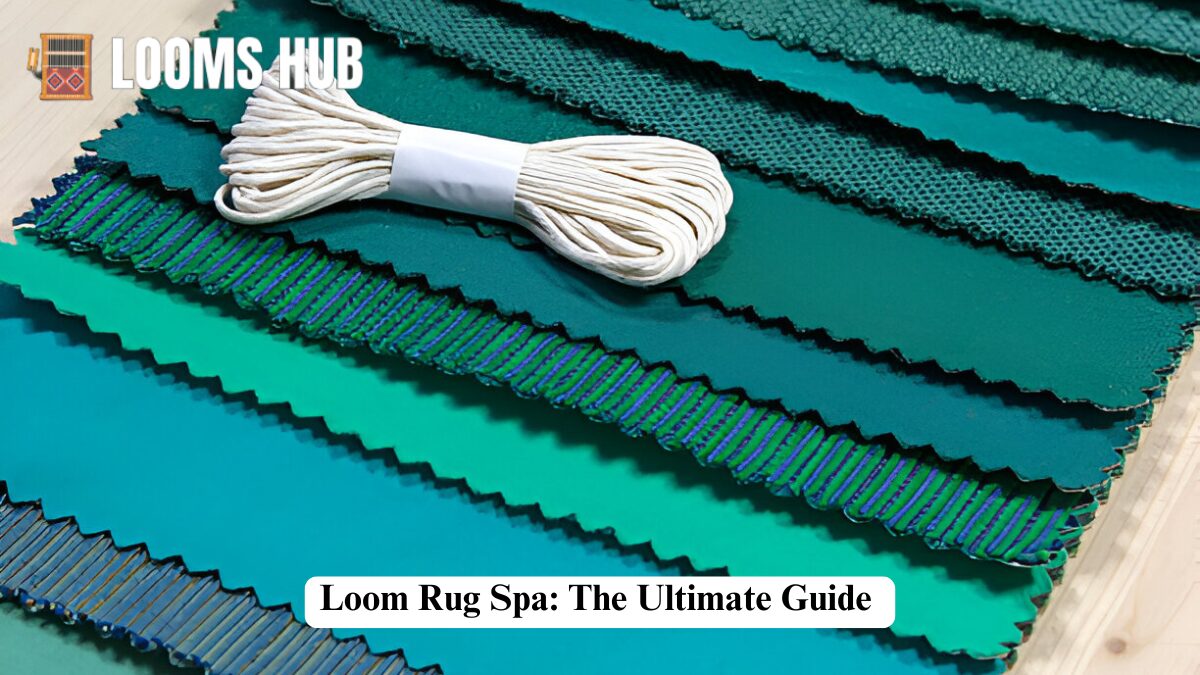Loom rugs add beauty, warmth, and sophistication to any space. Whether handwoven or machine-made, these rugs require proper care to maintain their texture, durability, and vibrance. A Loom Rug Spa is a specialized approach to deep cleaning, restoring, and preserving these beautiful woven pieces. In this guide, you’ll learn everything about loom rug spa treatments, from professional cleaning techniques to DIY maintenance methods.
What is a Loom Rug Spa?
Definition and Purpose
- A Loom Rug Spa is a specialized cleaning and restoration process for woven rugs.
- It involves deep washing, fiber conditioning, stain removal, and reweaving damaged areas.
Why is it Important?
- Prevents fiber deterioration and extends rug lifespan.
- Enhances rug colors and removes embedded dirt and allergens.
- Helps maintain woven integrity by addressing wear and tear.
Who Needs a Loom Rug Spa?
- Homeowners with antique, handwoven, or luxury rugs.
- Businesses, hotels, and commercial spaces with high-traffic rugs.
- Collectors of traditional or tribal loom rugs.
Types of Loom Rugs and Their Cleaning Needs
Handwoven Loom Rugs
- Made on traditional looms using cotton, wool, or silk.
- Require gentle hand-washing to prevent fiber damage.
Machine-Woven Loom Rugs
- Manufactured using power looms, often with synthetic fibers.
- Can tolerate mild detergent cleaning but need careful drying.
Antique and Oriental Loom Rugs
- Delicate, often dyed with natural plant-based colors.
- Must be cleaned using pH-balanced solutions to preserve hues.
Professional Loom Rug Spa Process
Inspection and Assessment
- Experts check for damage, fading, stains, and worn-out areas.
- Identifies fiber type and determines the best cleaning method.
Dust Removal and Pre-Wash Treatment
- Professional rug spas use vibratory dusting machines to remove fine dirt.
- Stubborn stains are pre-treated using enzyme-based cleaners.
Deep Washing and Rinsing
- Rugs are washed using submersion techniques or controlled steam cleaning.
- Special herbal or pH-balanced solutions preserve fiber softness.
Drying and Conditioning
- Rugs are air-dried in temperature-controlled rooms.
- Wool or silk rugs are conditioned with natural oils to restore texture.
DIY Loom Rug Spa: Home Care Tips
Regular Maintenance and Vacuuming
- Use a low-power vacuum to avoid pulling out woven fibers.
- Always vacuum both sides of the rug for deep dust removal.
Spot Cleaning for Stains
- Blot spills immediately using a white cloth and mild detergent.
- For tough stains, mix white vinegar and baking soda to lift dirt.
Deep Cleaning at Home
- Use a gentle hand-wash method for delicate rugs.
- Avoid harsh brushes that may damage weaving patterns.
Common Rug Problems and Solutions
| Issue | Cause | Solution |
| Fading | Sun exposure | Rotate the rug and use UV protectors |
| Shedding | Loose fibers | Regular vacuuming and brushing |
| Stains | Spills and dirt | Spot clean with mild detergent |
| Odors | Moisture retention | Use baking soda or sun-dry the rug |
The Importance of Professional Rug Spa Services
Preserving Value
- Antique and high-end rugs maintain their value when properly cared for.
Protecting Weaving Integrity
- Over-washing or using harsh chemicals can weaken the rug’s fibers.
- Professional spas use specialized restoration techniques.
Eco-Friendly Cleaning Methods
- Many rug spas use herbal washes and chemical-free solutions.
Case Studies: Successful Loom Rug Restorations
Case Study 1: Antique Persian Rug Restoration
- A 150-year-old rug with color fading and holes restored using hand-dyeing and reweaving.
Case Study 2: Modern Wool Rug Deep Cleaning
- A luxury wool rug regained vibrancy and softness after an enzyme bath.
Case Study 3: Pet Stain Removal on Silk Rug
- A silk rug with severe pet stains was saved using pH-controlled enzyme cleaning.
Conclusion
A Loom Rug Spa is essential for keeping your woven rugs in pristine condition. Whether you opt for professional treatments or DIY care, proper maintenance enhances durability, preserves beauty, and protects your investment. Understanding the right cleaning techniques will ensure that your loom rug remains a timeless centerpiece in your home or business for years to come.
FAQs
How often should I take my rug for professional cleaning?
It depends on usage, but most rugs benefit from a deep clean every 12-18 months.
Can I machine-wash my loom rug?
No, loom rugs should be hand-washed or professionally cleaned to avoid damage.
How do I remove pet odors from my rug?
Sprinkle baking soda, let it sit for an hour, then vacuum thoroughly.
Is steam cleaning safe for loom rugs?
For some rugs, yes. However, delicate fibers like silk should avoid direct steam exposure.
What’s the best way to dry a loom rug?
Always air-dry in a shaded area to prevent sun damage and color fading.
Can I restore faded colors in my rug?
Yes, professional rug spas offer dye restoration services for color enhancement.
How do I store a loom rug long-term?
Roll it with acid-free paper, store in a cool, dry place, and avoid plastic covers.
Do natural fiber rugs attract more dust?
Yes, wool and cotton rugs tend to trap more dust and require regular cleaning.
Can water damage a loom rug?
Excess moisture can weaken fibers and lead to mold. Always dry rugs completely.
Are rug spa services expensive?
Costs vary, but professional cleaning is worth it to extend the rug’s lifespan.



